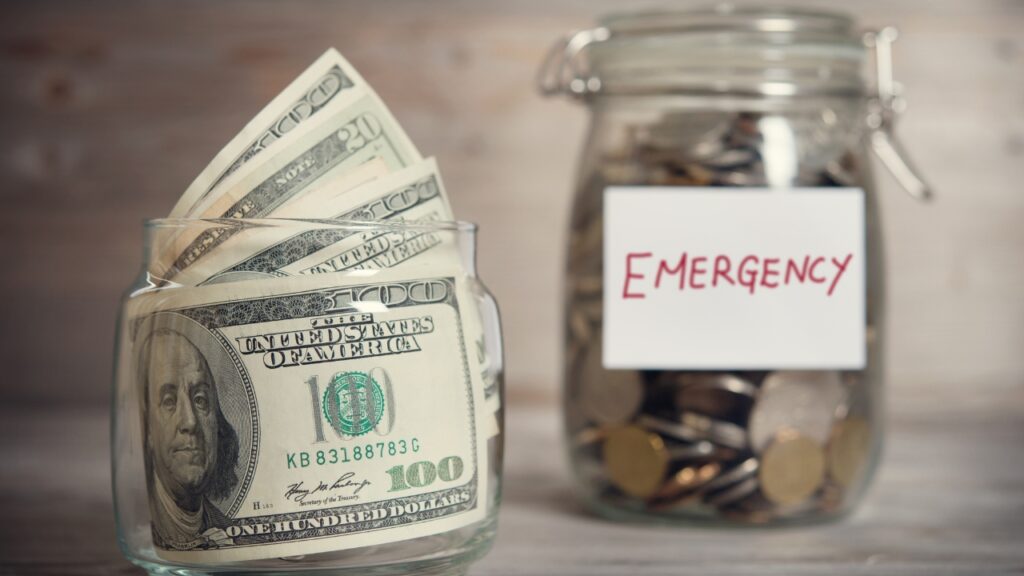Financial emergencies are like unexpected guests they show up uninvited and often overstay their welcome. Whether it’s a job loss, sudden medical expense, or a major car repair, these moments can disrupt your entire life. But here’s the good news: with the right planning, you can emergency-proof your finances and shield yourself from the worst effects of these surprise storms. Let’s break down exactly how you can build a rock-solid financial defense system that’ll keep you secure no matter what curveballs life throws your way.
Understanding Financial Emergencies
What Qualifies as a Financial Emergency?
Not every financial hiccup counts as an emergency. A sale at your favorite store or a vacation opportunity doesn’t make the cut. A financial emergency typically includes situations that are unexpected, urgent, and necessary.
Some common examples are:
- Medical emergencies or unexpected hospital bills
- Major car repairs
- Sudden job loss or reduction in work hours
- Urgent home repairs (think burst pipes or a broken furnace)
- Emergency travel (e.g., attending a funeral)
What sets these apart is their immediacy and potential to derail your life if left unaddressed. Understanding what qualifies helps you prioritize spending and avoid depleting your emergency fund on non-essentials. If you find yourself regularly dipping into savings for things that aren’t urgent or essential, it’s time to revisit your financial boundaries.
The Real Cost of Being Unprepared
When you’re not financially prepared for emergencies, the consequences go beyond your bank account. Financial stress can impact your health, relationships, and even your job performance. Many people turn to credit cards or payday loans in a crisis, which often leads to a dangerous cycle of debt.
Here’s what can happen:
- You max out your credit cards, racking up high-interest debt.
- You delay payments on essential bills, damaging your credit score.
- You borrow money from friends or family, straining relationships.
- You make emotionally driven decisions, which can worsen your financial state.
And that’s just the short term. Long-term financial instability can prevent you from achieving key life goals like buying a home, starting a business, or retiring comfortably. Being unprepared is like driving without insurance you’re gambling with your future.
Assessing Your Financial Health
Evaluating Income and Expenses
Before you can start building a safety net, you need to get a clear picture of where you stand financially. This starts with understanding how much money is coming in versus how much is going out.
Start by listing:
- All income sources: salary, side gigs, rental income, etc.
- Fixed expenses: rent/mortgage, insurance, car payments.
- Variable expenses: groceries, utilities, transportation.
- Discretionary spending: dining out, subscriptions, entertainment.
The goal is to spot imbalances. Are you living beyond your means? Are there areas where you can cut back? Tracking your spending for at least a month can reveal habits that are silently draining your finances. Apps like Mint, YNAB, or even a simple spreadsheet can help you do this efficiently.
Once you know your numbers, you’ll see where adjustments are needed. Maybe your streaming subscriptions total more than your monthly emergency savings. That’s a red flag and an opportunity.
Net Worth Calculation and Its Importance
Your net worth is the most honest snapshot of your financial health. It’s calculated by subtracting your liabilities (what you owe) from your assets (what you own).
Formula: Net Worth = Total Assets – Total Liabilities
Assets include:
- Cash and savings
- Retirement accounts
- Property or real estate
- Investments
Liabilities include:
- Mortgage or rent owed
- Credit card balances
- Student loans
- Auto loans
Tracking your net worth regularly helps you see progress over time. It also highlights potential vulnerabilities like too much debt or too few liquid assets. If your net worth is negative, don’t panic. Use it as a motivator to create a game plan. Think of it like a fitness journey: the scale isn’t everything, but it helps track your progress.
Building a Rock-Solid Emergency Fund
How Much Should You Save?
The standard rule of thumb is to save 3 to 6 months’ worth of essential expenses. But let’s get real it’s not one-size-fits-all. If you’re single, rent an apartment, and have a stable job, you might get away with 3 months. But if you have a family, own a home, or work freelance, you might need 6 to 12 months.
Start small. Even $500 can make a difference when a minor emergency strikes. Then build up from there.
Steps to calculate your target fund:
- List monthly essentials: rent, groceries, utilities, transportation, insurance.
- Multiply that total by your desired months of coverage (e.g., 3–6).
- That’s your emergency fund goal.
Think of this fund as your financial first-aid kit. You hope you never need it, but you’ll be thankful it’s there when life goes sideways.
Where to Keep Your Emergency Fund
The key is accessibility, but not temptation. You want your money within reach in a crisis but not so accessible that you spend it impulsively.
Ideal options include:
- High-yield savings accounts (easy access + interest)
- Money market accounts
- Separate savings accounts at different banks
Avoid putting it in stocks or long-term CDs. Emergencies don’t wait for market highs or maturity dates.
Automating Savings for Consistency
Saving consistently is easier when it’s out of your hands. Automation takes the emotional guesswork out of saving.
Ways to automate:
- Direct deposit into a dedicated savings account
- Set recurring transfers from checking to savings
- Use round-up apps that save your spare change
Start with an amount you won’t miss $20, $50, or even just your daily coffee money. Over time, those small deposits add up. And when that rainy day comes, you’ll thank yourself for every drop you saved.
Budgeting for Emergency Preparedness
Creating a Financially Flexible Budget
A budget isn’t just a tool it’s your financial game plan. And when emergencies strike, a flexible budget can be the difference between survival and panic. Think of it like building a house with shock absorbers. It should flex with your needs without crumbling under pressure.
To start, you need to move beyond static, rigid spreadsheets. A zero-based budget or a 50/30/20 rule can help you allocate funds more realistically:
- 50% for needs: rent, groceries, utilities
- 30% for wants: dining, entertainment, subscriptions
- 20% for savings and debt repayment
But here’s the secret sauce: always include a buffer typically 5-10% of your monthly income for unexpected costs. This gives you breathing room if prices spike or an unplanned expense arises.
Also, categorize expenses into “must-haves” and “nice-to-haves.” In a crisis, you’ll know exactly what to pause or cancel. Netflix and gourmet coffee? Easy to cut. Rent and medication? Non-negotiables.
Review your budget monthly. Adjust as your income or priorities shift. Life changes fast, and your budget should keep pace like a financial GPS constantly rerouting for the most efficient path.
Trimming Non-Essential Expenses
Cutting costs doesn’t mean cutting joy. It means being strategic. The goal is to free up money you can redirect to your emergency fund or essential needs.
Start by listing all discretionary expenses:
- Streaming services
- Dining out
- Gym memberships
- Shopping splurges
- Subscription boxes
Now ask: which of these truly bring you value?
Here’s how to cut without feeling deprived:
- Audit your subscriptions—you might be paying for three streaming services but only using one.
- Cook more at home—saving $100 a week on takeout equals over $5,000 a year.
- Embrace free entertainment—libraries, parks, free virtual events.
Use cash envelopes or prepaid cards for discretionary spending. It forces mindfulness and keeps overspending in check. You can also try no-spend challenges set a week or a month where you only buy essentials. It’s surprisingly liberating and eye-opening.
Eliminating High-Risk Debts
Prioritizing Debt Payments
Debt is a major financial vulnerability, especially during an emergency. High-interest debt—like credit cards or payday loans—can snowball fast and eat into your resources when you need them most.
Start by listing all your debts:
- Type (credit card, student loan, auto loan)
- Balance
- Interest rate
- Minimum payment
Use the avalanche method (pay off high-interest debts first) for long-term savings or the snowball method (start with smallest debt) for motivation. Either way, always make minimum payments on all debts to avoid penalties.
Negotiate lower interest rates with creditors, or consider consolidating high-interest debts into a personal loan or balance transfer card only if you’re confident you won’t rack up new debt.
The key is consistency. Make debt repayment a non-negotiable part of your budget, just like rent or food. And once a debt is paid off, reallocate that amount to your emergency fund.
Avoiding New Debts During Crisis Times
Emergencies can tempt you into quick fixes like credit cards or payday loans. But they often create bigger problems down the road. Instead of borrowing, plan ahead.
Here’s how to avoid falling into the debt trap:
- Build your emergency fund as a buffer.
- Pause non-essential spending immediately when a crisis hits.
- Sell unused items for quick cash.
- Look for hardship assistance programs (many utilities and lenders offer support).
Also, stay off the “buy now, pay later” platforms. They may seem harmless, but they chip away at your future cash flow. Remember: in a crisis, cash flow is king.
Avoiding new debts isn’t just about math it’s about mindset. If you shift from a “spend to survive” mentality to a “plan to thrive” one, you’ll stay more resilient no matter the crisis.
Diversifying Income Streams
Why One Income Source Is Risky
Relying on a single paycheck is like balancing on a tightrope without a net. If you lose your job or face a pay cut, everything can spiral fast. That’s why income diversification is a cornerstone of emergency-proofing.
Think of your income like a stool. One leg? It’s wobbly. Two legs? Better. Three or more? Now you’re solid.
Start exploring:
- Freelance work
- Selling digital products or crafts
- Teaching skills online
- Renting out property or rooms
- Dividend-producing investments
Even a small second income can cover key bills if your main job vanishes. And in some cases, these side gigs can grow into full-time businesses.
Don’t wait for a crisis to act. Start planting income seeds today. It’s the best way to protect your financial future.
Ideas for Side Hustles and Passive Income
Not all side gigs require grinding 24/7. Many can be automated or scaled to generate income with minimal effort over time aka passive income.
Some smart options include:
- Affiliate marketing via a blog or social media
- Self-publishing eBooks
- Online courses on platforms like Udemy or Teachable
- Investing in REITs (Real Estate Investment Trusts)
- Selling stock photos or digital designs
If you prefer active side hustles, try:
- Rideshare driving
- Pet sitting or dog walking
- Freelancing in your area of expertise (design, writing, coding)
- Virtual assistance or customer support
Choose what aligns with your skills, schedule, and passions. The goal isn’t to burn out it’s to build up your safety net while doing something sustainable.
Insurance: Your Financial Shock Absorber
Types of Insurance to Consider
Insurance is often misunderstood. It’s not just about having coverage it’s about having the right coverage for the right reasons. Think of it as your financial shock absorber. When life hits hard, it helps soften the blow.
Here are the core types you should consider:
- Health Insurance – This is non-negotiable. Medical emergencies are one of the top causes of bankruptcy. Even a minor ER visit can cost thousands.
- Auto Insurance – Required by law in most places, but make sure your policy includes adequate liability and collision coverage.
- Homeowners or Renters Insurance – Covers your possessions and liability. Renters often skip this, but it’s affordable and critical in case of fire, theft, or disaster.
- Disability Insurance – Replaces a portion of your income if you’re unable to work due to illness or injury.
- Life Insurance – Especially important if others rely on your income. Term life insurance offers great value and peace of mind.
- Umbrella Insurance – Adds extra liability protection beyond what your auto or homeowners policy offers.
The goal isn’t to be over-insured it’s to be adequately insured. Choose policies based on your current financial situation, family needs, and risk level.
Evaluating Your Current Coverage
Having insurance isn’t enough you need to know exactly what your policy covers and what it doesn’t.
Here’s a quick insurance audit checklist:
- Review your deductibles can you afford them in an emergency?
- Check for coverage gaps like flood insurance or out-of-network health coverage.
- Update beneficiary information especially after major life events.
- Compare premiums annually to make sure you’re getting the best deal.
Ask your provider questions like:
- “What’s excluded from my policy?”
- “Do I qualify for any discounts?”
- “Is this replacement cost or actual cash value?”
If you haven’t reviewed your policies in over a year, now’s the time. Better to spot weaknesses before they’re exposed in a crisis.
Protecting Your Credit Score
The Role of Credit in Emergencies
Your credit score isn’t just a number it’s your financial reputation. And during an emergency, it can open (or close) critical doors.
A high credit score can:
- Qualify you for lower-interest loans or credit cards
- Help you get approved for rental housing
- Reduce your insurance premiums
- Act as a backup funding source if your emergency fund falls short
In short, credit gives you leverage. And in a crisis, every advantage counts.
But here’s the catch: it’s easier to maintain good credit than to rebuild it. That’s why you need to protect it before an emergency hits.
Tips to Maintain a Healthy Credit Score
Start with these credit-boosting habits:
- Pay bills on time – Set up autopay or reminders to avoid late fees.
- Keep credit utilization low – Aim to use less than 30% of your available credit.
- Don’t close old accounts – They help with credit age, which impacts your score.
- Monitor your credit report – Check annually at AnnualCreditReport.com for free.
- Avoid unnecessary hard inquiries – Too many loan or card applications can ding your score.
If you’re in a financial crunch, contact creditors before you miss a payment. Many offer hardship plans, deferments, or temporary interest reductions.
Think of your credit score as a financial lifeboat. You hope you never need it—but when you do, it can save you from sinking.
Financial Preparedness for Families
Joint Budgeting and Communication
When you’re part of a family, emergency-proofing isn’t a solo mission. It’s a team effort. That means open communication and shared responsibility.
Start with a family financial meeting:
- Review all income and expenses together
- Set savings goals as a unit
- Assign budget roles (who tracks bills, who updates the spreadsheet, etc.)
Transparency is key. Everyone should know where the money goes and what to cut in a crisis. It also helps reduce stress and finger-pointing during emergencies.
Discuss big “what if” scenarios:
- What happens if one partner loses their job?
- How will you handle a major home or car repair?
- What’s the plan if a medical emergency strikes?
Create a shared emergency plan. This can include:
- A joint savings goal
- Access to shared bank accounts
- Backup income ideas both partners can explore
The more prepared you are together, the stronger your financial foundation will be.
Teaching Kids About Financial Safety Nets
Kids may not pay the bills, but they feel the impact of financial emergencies just as much. Teaching them about money early on builds resilience for the future.
Here are some practical ways to teach kids:
- Use a savings jar – Let them save for toys or games to learn delayed gratification.
- Talk about needs vs. wants – Use real-life examples when grocery shopping or budgeting.
- Introduce basic budgeting – Give them an allowance and help them create a mini-budget.
For older kids, go deeper:
- Teach them how banks, credit, and interest work.
- Encourage them to set emergency savings goals from summer jobs.
- Involve them in family discussions about financial goals or big purchases.
You’re not just preparing your finances you’re setting up the next generation for success. That’s the ultimate legacy.
Emergency-Proofing Investments
Risk Management Strategies
Investments can be a powerful tool for building wealth, but they also come with risks especially during turbulent times. When financial emergencies hit, the last thing you want is to liquidate your investments at a loss. That’s why risk management is essential.
Here’s how to protect your investments:
- Asset Allocation – Diversify across stocks, bonds, and cash. Don’t put all your eggs in one basket.
- Emergency Fund First – Never invest money you can’t afford to lose or may need within 1–2 years.
- Rebalance Regularly – Markets fluctuate. Rebalancing helps maintain your ideal risk level.
- Avoid Emotional Decisions – Market dips are temporary. Panic selling locks in losses.
- Use Stop-Loss Orders – These automatically sell assets if they fall to a certain price, helping you minimize major losses.
In addition, consider investing in safer assets during unstable times like Treasury bonds, dividend-paying stocks, or precious metals. You don’t need to avoid risk altogether, but you do need to manage it smartly.
Keeping a Diversified Portfolio
Diversification isn’t just for Wall Street pros. It’s for anyone who wants peace of mind during a crisis. A well-balanced portfolio helps you weather economic storms without losing sleep or your savings.
Include a mix of:
- Equities (stocks) – Higher return potential, but more volatile.
- Fixed income (bonds) – Lower returns but more stability.
- Cash or equivalents – Provides liquidity in emergencies.
- Real estate or REITs – Long-term growth and income.
- Alternative assets – Gold, commodities, crypto (use sparingly).
Your allocation depends on your age, risk tolerance, and goals. Younger investors may lean more toward growth stocks, while retirees might favor bonds and income-generating assets.
Review your portfolio at least annually. And in uncertain times, consider working with a financial advisor to fine-tune your investment mix.
Creating a Crisis-Proof Financial Plan
Scenario Planning and Contingency Funds
What if you lost your job tomorrow? Or your car broke down? Or your partner got sick? That’s where scenario planning comes in it helps you anticipate and prepare for the “what-ifs.”
Here’s how to do it:
- List potential emergencies relevant to your life (job loss, illness, car trouble).
- Estimate the financial impact of each.
- Create mini-funds or categories within your emergency fund for each scenario.
- Identify action steps for each situation (e.g., who to call, what expenses to cut).
This approach transforms fear into focus. Instead of being caught off guard, you’ll already have a plan and peace of mind.
Setting Financial Goals During Uncertainty
It’s easy to feel stuck during uncertain times. But goal setting can give you direction and motivation.
Start with short-term goals:
- Build a $1,000 starter emergency fund
- Pay off a credit card
- Set a monthly savings target
Then move to long-term goals:
- Save 6 months of expenses
- Max out retirement contributions
- Buy insurance or investment products
Make goals SMART: Specific, Measurable, Achievable, Relevant, Time-bound. And break them down into small, manageable steps. Even saving $5 a day gets you $1,825 a year closer to your goal.
Tools and Apps for Emergency Planning
Budgeting Tools
Managing money manually is tough. Thankfully, there are great tools to automate your budgeting and track progress toward your emergency goals.
Top picks:
- YNAB (You Need A Budget) – Great for zero-based budgeting.
- Mint – Syncs accounts and categorizes spending.
- PocketGuard – Shows what’s safe to spend after bills and savings.
- Goodbudget – Envelope-style budgeting app.
These tools help you stay consistent, spot wasteful spending, and visualize your progress. Many also allow you to set custom savings goals perfect for emergency fund tracking.
Emergency Fund Calculators
Want to know exactly how much you need? Emergency fund calculators can help.
Best options:
- NerdWallet’s Emergency Fund Calculator
- Dave Ramsey’s Emergency Savings Planner
- SmartAsset Emergency Fund Tool
These tools consider your expenses, lifestyle, and job stability to recommend a realistic savings target. Use them annually or after any major life change.
Rebuilding After a Financial Crisis
Steps to Recover Financially
If you’ve already been through a crisis, don’t panic. Recovery is possible and you’re not alone. Follow these steps to bounce back:
- Assess the damage – What debts, missed payments, or losses did you incur?
- Stop the bleeding – Cut unnecessary spending and secure income sources.
- Rebuild your emergency fund – Even $10 a week helps.
- Tackle high-interest debts – Use the snowball or avalanche method.
- Check your credit report – Dispute errors and rebuild your score.
- Seek help if needed – From credit counselors, financial advisors, or non-profits.
Recovery isn’t linear. Some months you’ll make progress, others might stall. Keep showing up. Momentum builds over time.
Learning from Financial Setbacks
Every crisis is a chance to learn. Reflect on:
- What could you have done differently?
- What systems or savings could have helped?
- What new habits will you carry forward?
Turn your crisis into your comeback story. Use it to build stronger habits, smarter strategies, and a more resilient mindset.
Psychological Aspects of Financial Emergencies
Managing Anxiety and Stress
Money stress is real and overwhelming. During emergencies, your brain often goes into survival mode, making it hard to think clearly.
Here’s how to stay grounded:
- Breathe deeply – It calms your nervous system.
- Write down your plan – Seeing steps on paper reduces panic.
- Talk it out – Share your worries with trusted friends or a therapist.
- Focus on what you can control – Even small wins matter.
Financial emergencies are stressful, but you don’t have to suffer in silence. Emotional support is as vital as financial strategies.
Building Financial Confidence
Confidence doesn’t come from never facing hardship it comes from knowing you can handle it. Start building that confidence now:
- Celebrate small wins
- Keep learning about personal finance
- Track your progress monthly
- Build a financial vision board or future goals list
Every step you take today adds up to a stronger tomorrow. You’ve got this.
Conclusion and Action Plan
Emergencies don’t wait for a convenient time but that doesn’t mean you have to face them unprepared. By understanding your financial health, building an emergency fund, trimming excess spending, and creating a flexible plan, you’re giving yourself the power to face life’s challenges head-on.
Here’s your action plan:
- Build your emergency fund (start small, grow big).
- Evaluate your budget, cut waste, and add flexibility.
- Eliminate high-interest debt.
- Explore extra income sources.
- Get the right insurance coverage.
- Protect and rebuild your credit.
- Prepare your family and educate your kids.
- Diversify investments and plan for the unexpected.
You’re not just emergency-proofing your finances you’re building a future where you thrive, not just survive.
Check this post Tips to Build Your Emergency Fund Fast
FAQs
Ideally, 3–6 months of essential expenses. If your job is unstable or you’re self-employed, aim for more 6–12 months.
Start with non-essentials like subscriptions, dining out, and luxury items. Focus on needs over wants.
Balance is key. Build a small emergency fund first, then focus on high-interest debt. Avoid pausing savings entirely.
Start small. Save even $5/week, cut wasteful expenses, and look for side income opportunities. Every bit counts.
Automate savings, sell unused items, take on temporary side gigs, and redirect windfalls like tax refunds or bonuses.




